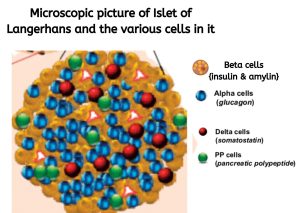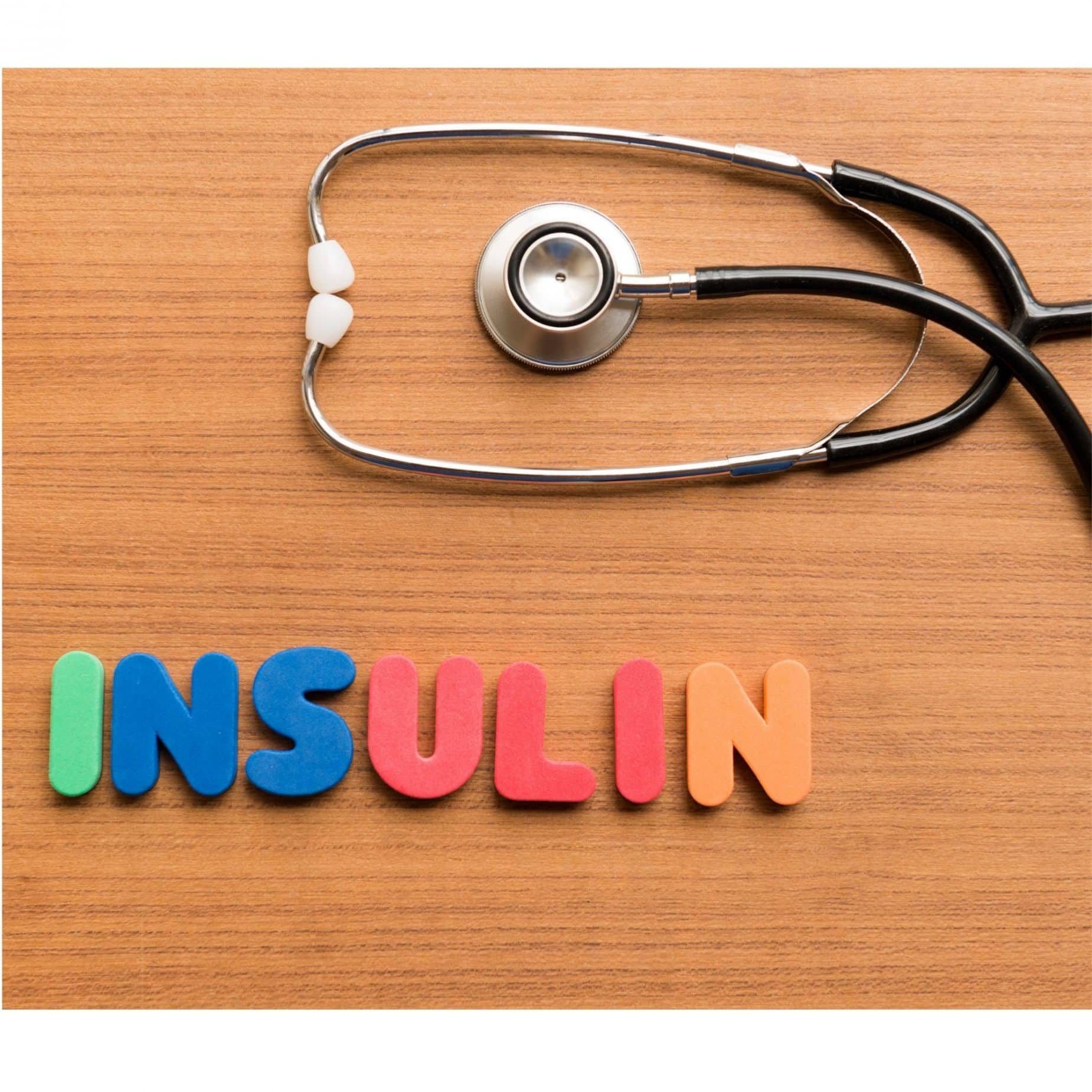5 Major Hormones that control blood sugar-
Whenever we eat food, we consume some amounts of carbohydrates as either-
- Starch
- Complex sugar like sucrose, maltose, lactose and
- Simple sugar like glucose, fructose, etc.
Along with carbohydrates we take proteins and fats which are also broken down by the digestive enzymes into smaller components like the amino acids[proteins] and fatty acids[fats] that is absorbed by the cells in our intestinal linings and transported to various parts of the body by blood vessels .
Similarly, starch and complex sugar are broken down into simple ones like glucose and transported by the blood to various parts of body like brain, liver etc.
Some of these sugars are used by the body parts to produce energy and some are stored in the form of glycogen[in liver] and fats[in adipose tissue].
All these changes in sugar utilization are brought about by a ste of hormones produced by the gland-pancreas.
Table of Contents
Which are these hormones?
They are-
- Insulin
- Glucagon
- Somatostatin
- Pancreatic polypeptide
- Amylin
Now, let us learn how they do it-
Before that, let’s first have look at the structure of the pancreas and the Islet of Langerhans that helps regulate blood sugar levels-


As you can see in the picture above, we have a gland in our abdomen called the pancreas. This pancreas gland produces both digestive enzymes[ the acinar cells] and hormones[ Islet of Langerhans]. In this article, we will cover only the hormones produced by the Islets of Langerhans. So let’s start with-
Insulin and Amylin
Insulin as well as amylin are two hormones that is produced in the beta cells of the islet of Langerhans in the pancreas.
How does Insulin work?
Insulin is released from the islet beta cells in response to the meal we eat. It works in 2 ways after entering the bloodstream, viz.-
- Glucose that is absorbed from the digested food is transported to the muscles and fatty[adipose] tissue, brain, etc. These tissues have insulin receptors on their cells. Insulin attaches to these receptors and acts as a gateway to glucose absorption by the cells. This is termed Peripheral Glucose Clearance. Lack of insulin impairs this function.
- In between mealtimes, these organs still need glucose to function properly. Insulin then induces the glycogen storage cells in the liver to convert glycogen to glucose and then release it into the bloodstream. This is termed Hepatic Glucose Production. Thereafter, the insulin works as shown above. This is decreased if the sensitivity to insulin of the liver cells is impaired. This is observed in cases of hypoglycemia.
In this way, Insulin maintains or regulates the normal plasma glucose. This is termed Glucose Homeostasis.
Amylin helps insulin in a similar way along with insulin to control blood sugar.
Glucagon
As mentioned earlier, organs like the brain, muscles, etc., require a constant supply of glucose to function properly. As mentioned by Dr. V. Seshiah in his book-A Handbook on Diabetes Mellitus–
An arterial plasma glucose of 3 mmol/L[56%] minimum is required to deliver glucose to the brain at a rate of 6g/hr. At rest, other tissues require 4g/hr, so that whole body requirement is 10g/hr. To sustain this blood glucose, a mechanism in place to do this required by the body-and this work is done by the hormone Glucagon.
So, the function of glucagon, which is produced by the alpha cells in the islet of Langerhans helps maintain the glucose level in the fasting state of our body, i.e., in between meals.
Somatostatin
This hormone is produced by the delta [δ] cells in the islets, our gut, and some specific neurons. It is a regulator of nutrient absorption and nutrient disposal.
The release of somatostatin is stimulated by glucose, amino acids, and by insulin deficiency. It’s function can be summarised as inhibition of-
- growth hormone
- insulin
- glucagon
- and gut peptides
Analogues[ similar drug] of somatostatin is used in the treatment of Insulinoma, a tumor of pancreas, where insulin production is very high which can cause hypoglycemia.
Pancreatic Polypeptide
Pnacreatic poly peptides are produced by the PP cells in the Islets of Langerhans.Their effect on very well known but there is evidence that-
- IV glucose and somatostatin reduces its production
- Fasting induces its secretion
- it increases production of acid[HCL] in the stomach
- decreases pancreatic fluid secretion
Other than these 5 major hormones, there are a few others that influence blood sugar regulation-
| Gland | Hormone | Effect on blood sugar |
| Adrenal Cortex | Cortisol | Increases |
| Anterior Pituitary | ACTH | Increases |
| Thyroid | Thyroxine | Increases |
| Adrenal Medulla | Epinephrine | Increases |
| Anterior Pituitary | Growth hormone | Increases |
For more on the hormones produced by the pancreas, read this article-The hormone that control Blood Sugar

